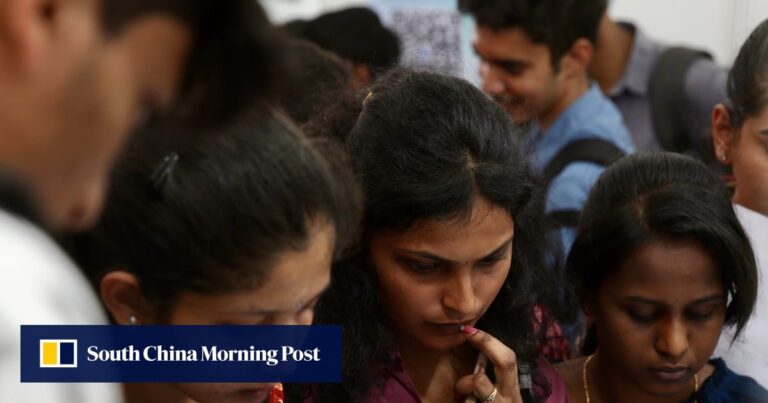“I have been unemployed for more than two years now. I have tried every little opportunity but have not been able to land a stable job so far,” Mankar said, his voice trembling.
Mankar is one of tens of millions of young Indians struggling to find work amid a severe unemployment crisis that analysts warn is not enough being tackled by the government.
In February, more than 4.7 million applicants competed for 60,000 vacancies in the Uttar Pradesh police force. Other Indian states have reported similar floods of applications in recent years.

During the annual budget presentation on Tuesday, The government announced a special $24 billion package to boost job creation and improve worker skills, on top of other similar plans aimed at lowering unemployment over the next five years.
The opposition argues that the government’s proposals are completely insufficient to solve the problem.
According to official data, India’s unemployment rate was 3.2% in fiscal year 2022-23. Youth unemployment fell to 10% during the period from 17.8% in fiscal year 2017-18. Many economists have doubts about the government’s figures.
The Centre for Monitoring Indian Economy, an independent think tank, estimated the unemployment rate to be 9.2% last month.
“Unemployment is the biggest challenge facing the country,” said P. Chidambaram, a former finance minister and leader of the opposition from the Indian National Congress party.
“The government’s response on employment has been inadequate and will have little impact on the severe unemployment situation across the country,” he said at a press conference after presenting the budget.

Analysts say a lack of jobs, particularly in India’s interior, is one of the main reasons Prime Minister Narendra Modi’s disappointing performance in recent general elections, in which his Bharatiya Janata Party failed to win a majority in parliament.
Analysts fear that an unresponsive government that does not introduce strong measures to reduce unemployment could lead to a worsening of the crisis.
Ravi Srivastava, director of the Centre for Employment Research at the New Delhi-based Human Development Institute, said there are several important dimensions to India’s unemployment crisis.
Speaking to This Week in Asia, Srivastava pointed to widespread underemployment, including among women, poor living conditions for workers and high unemployment, especially among India’s more educated young people.
“Given the volatile nature of the youth population, unemployment, especially among the more educated, is potentially an explosive problem,” he added.
More than 40% of India’s 1.4 billion people are under 25, and millions of young workers enter the labor market every year. India’s economy is expected to grow at a healthy 7.2% this year, but job creation remains a major challenge for the Modi government.
Economists say the main reason for low job creation in India is that a significant portion of government resources is pumped into capital-oriented sectors rather than labour-intensive ones.
Serious questions have been raised over the veracity of official employment data, including claims that India created nearly 47 million jobs between April 2023 and March 2024. If provisional data is accurate, this would be the highest annual job creation in the last 40 years.

Arun Kumar, a former professor of economics at Jawaharlal Nehru University (JNU), said Delhi’s method for determining unemployment is flawed.
“Official ILO definition [International Labour Organization] “This means that if someone is not earning in the market, they are unemployed. The Indian government says that if someone is working but not earning, they are employed,” Kumar said.
According to official data, there are an estimated 580 million workers in the country, more than 80 percent of whom are employed in the informal sector.
“The government’s policies are completely wrong. Unemployment is concentrated in the unorganised sector,” Kumar said, adding that the government was focusing more on strengthening the organised sector than on addressing the struggling informal sector.
Pravin Jha, professor of economics at JNU, said the current and previous governments have failed to address long-standing challenges in India’s job market.
“This is a long-term structural unemployment crisis. We have been using the term ‘growth without unemployment’ since the 1980s. We have even had an increase in unemployment. The crisis is much more serious. Those in power have misused the data,” he said.

